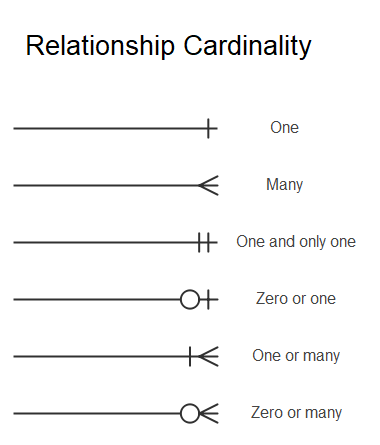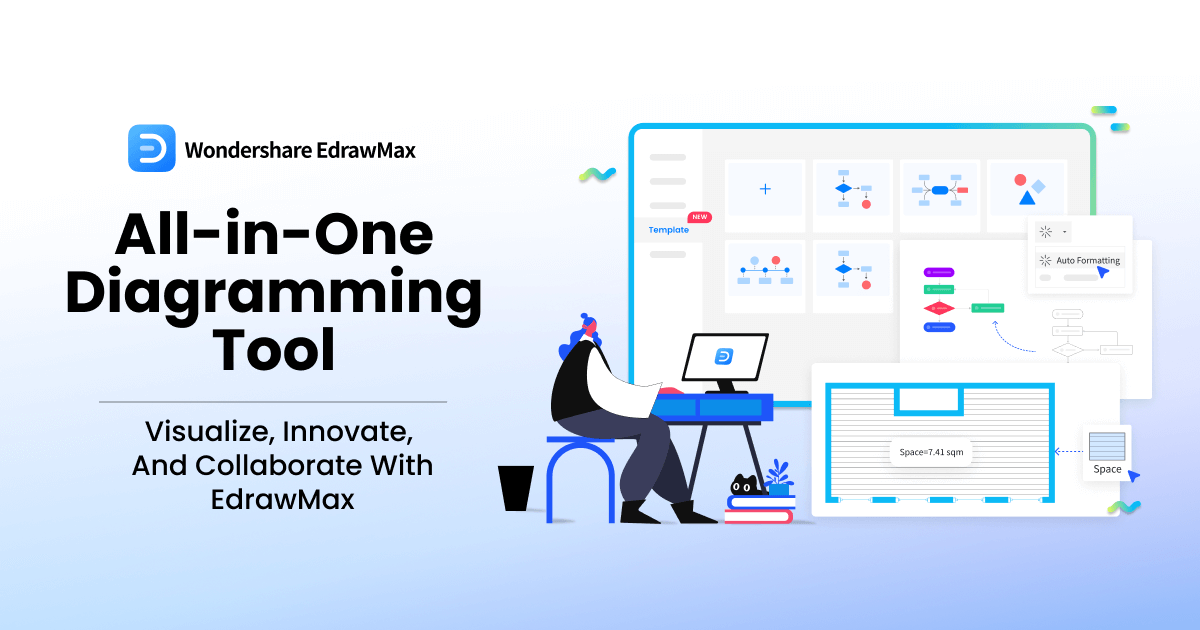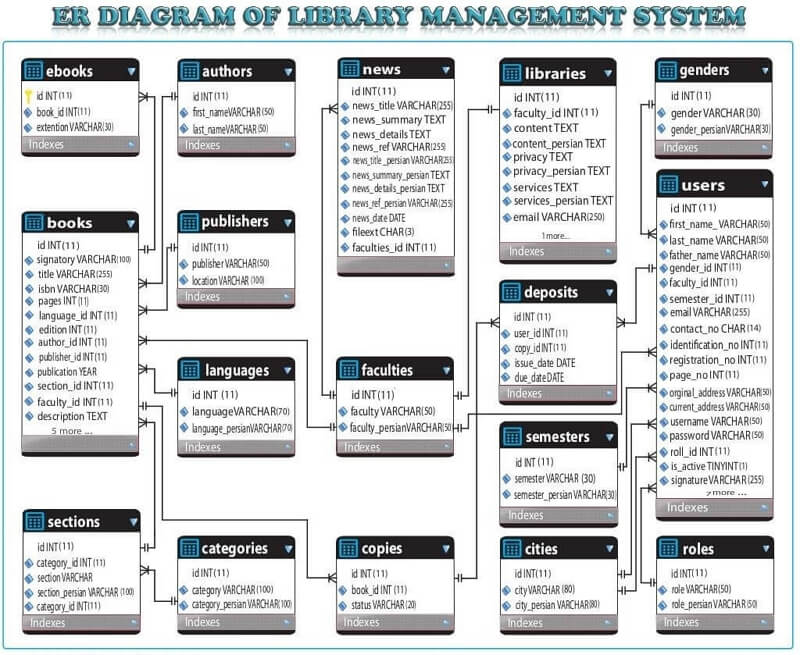The database is a terminology widely known as an essential component of any institution, business, or corporation’s record keeping. The diagram used to analyze the database’s structure is known as the Entity-Relationship diagram.
In this article, we will explore the ER diagram required for a library management system.
ER Diagram Examples for Library Management Systems
Before we proceed over to understand the entity-relationship diagram for library management systems, let us discuss its importance.
The library management system is an extensive database; the entity-relationship diagram helps show the relations between different entities and attributes. This helps in streamlining the things that are required for a particular Library management system.
To better understand an ER diagram, we will discuss a few examples and how they are used for the library management system.
Download EdrawMax, then you can click these examples and use them to create your own library management systems free!
Example 1 - Library Management System Database Design
As it can be observed in this example, the entities are present with their attributes. At the same time, the direct relations between the attributes are also shown, such as several CDs and books are present, so to differentiate, they have specific ISBNs and ISSNs. One key element to understand here is that proper symbols are used to understand an entity diagram.
Download EdrawMax by clicking the button below.
Example 2 - Library Management System
Here is a straightforward ER diagram for the Library Management System. You can observe the entity relations quite clearly, and their attributes are evident as well.
Download EdrawMax by clicking the button below.
Example 3 - ER Diagram of Library Management
Below is a much more complex example of an ER diagram. As it can be seen, several new entities are part of this ER diagram. One more exciting thing about this ER diagram is that one entity is linked to more than one entity.
Image Source: www.slideshare.net
Download EdrawMax by clicking the button below.
The ER diagram is built upon the number of entities that exist. The second important part is to know the relations amongst the entities themselves. While seeking an ER diagram, creators tend to figure out the number of entities they will be working with.

These arrow symbols are essential to remember as they help remember the type of relation between the entities. When a library management system is made, these relationships are necessary to know their placement in the database.
Like formerly discussed, the ER diagram helps in breaking down the database. This helps people in making changes to their databases, update them, and re-evaluate them if necessary.
Problems for Building a Library Management System
ER diagrams are usually used to resolve some sort of issue and so they always have a certain problem to solve. Some of the problems that can arise in a Library Management System are as follows:
- A single student can borrow or subscribe to multiple books, which means a one-to-many relation needs to exist between both these entities.
- A student can later become a member once they have paid a fee, so there should be space in the ER diagram for up-gradation between these entities.
- It would be best if you were varying that every book in the library is identified with a different ID. This means it will create an extensive database, and a comprehensive ER diagram needs to be in place.
- In a library, multiple members or students enroll themselves. These require a unique ID to identify them properly.
- When issuing books, there needs to be a due date set in place to return that book, which requires another addition in the ER Diagram.
EdrawMax
All-in-One Diagram Software
- Superior file compatibility: Import and export drawings to various file formats, such as Visio
- Cross-platform supported (Windows, Mac, Linux, Web)
How to Create an ERD for Library Management System
After understanding the ER diagram, we will go through a step-by-step process that shows how to create an ER diagram for a library management system.
Step 1: The first step is to identify the entity sets. These are things that have more than one instance of being existent. The entity sets for a library management system are as follows:
- Member
- Book
- Granter
- Section
- Publisher
Step 2: The second step is to associate attributes to the entity sets. This is important because entity sets are recurring, such as several books, members, etc. The attributes are needed to differentiate between entities. The respective attributes are as follows:
- Member: Member ID, Name, Birthday, Address, Age
- Book: Author, ISBN, Title, Author, Price
- Granter: Name, NIC, Number, Address, Post
- Section: SID, Name, Phone
- Publisher: PID, Name, Address, Phone
Step 3: The third step is to find the key attributes of each entity. The key attribute is unique to every single entity component. The key attributes are as follows:
- Member – Member ID
- Book – ISBN
- Granter – NIC
- Section – SID
- Publisher – PID
Step 4: The fourth step is to identify the relationship between the different entities present. This is necessary to analyze the database clearly and make a better library management system.

A single member can borrow multiple books if they want. This kind of relationship is known as a one-to-many relationship.

In this relation, a single section can have multiple books present over there. Making this a one-to-many relationship as well.

A single publisher can publish several books and supply them to the library. This is another one-to-many relationship.

The granter grants memberships to the student. There is only one granter and multiple members; thus, this is a one-to-many relationship.
Step 5: The fifth step is to compile all these steps. Join the entities that go together and form an ER diagram.

Use EdrawMax for ER Diagram Creation
An ER diagram is essential for databases. It is essential to use efficient tools to assist you in this. Build powerful ER diagrams with the help of EdrawMax, which makes it easy. There are hundreds of templates to choose from which can be readily customized.
So we would recommend that you use EdrawMax for making ER diagrams for your library management system.






